If you are interested in trave-l to Morocco and discovering the goal of your crossing, you can’t miss this post. All swimmers who come to cross the Straist of Gibraltar dream of touching Moroccan land, many of them have never traveled to this country, and they know little about this country and its culture. At ACNEG we find it interesting to contribute to make our neighboring country known, since it is the other important part of this crossing (Visit our guide on “10 things to do in fare before and after your crossing”). For this we recommend you travel to Morocco, just a few minutes from Tarifa, visit its beautiful northern towns, taste its rich gastronomy and experience its customs first-hand. We assure you that it will not leave you indifferent.
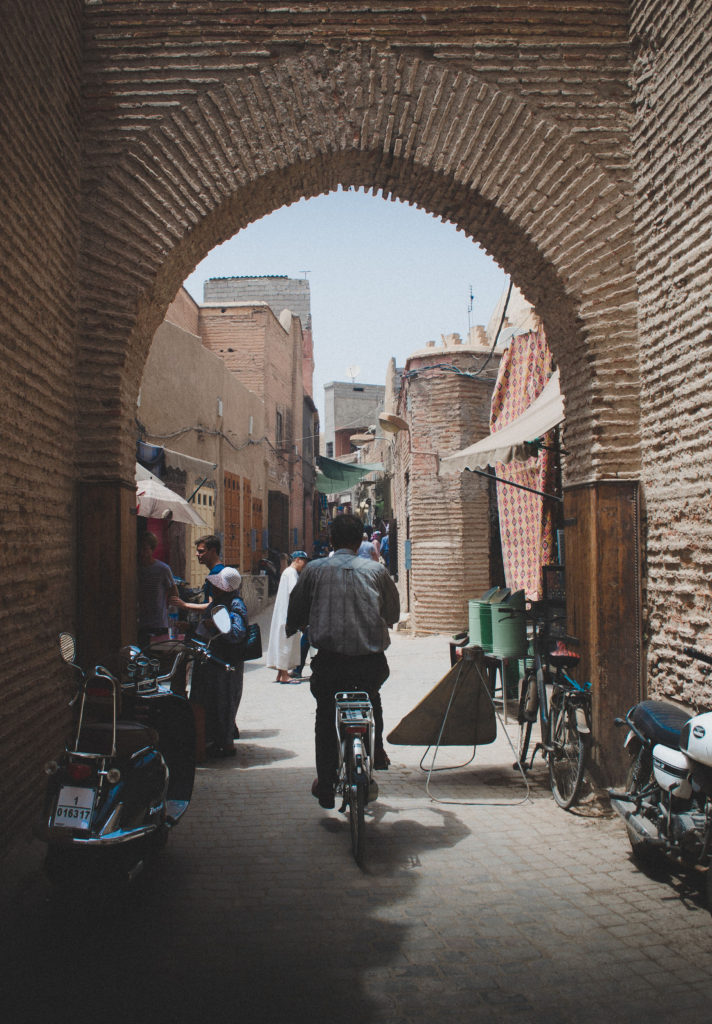
Photo by: Jorge Mallo
WHAT TOWNS TO VISIT IF YOU TRAVEL TO MOROCCO?
To travel to Morocco it’s important that you have planned in advance and according to the days you are going to spend in this beautiful country, the towns you want to visit, the monuments or emblematic places you want to see and the activities you would like to do. There are companies that are dedicated to this, that can provide you with specific routes according to your needs, and that also organize group excursions with expert guides in this area. We recommend you check the weather before your trip, since, when doing it by boat, with strong winds they are usually canceled.
Moroccan gastronomy
Moroccan food is one of the wonders of the country that most represents its culture, therefore, it’s something essential that you have to discover if you are going to travel to Morocco. Ingredients from various cultures that have influenced it throughout history (Berber, Arab and Mediterranean). Rich in spices, legumes and vegetables. It is important to note that pork in their culture is strictly prohibited (Jalufo).
On your trip to Morocco we recommend that you try the traditional main dishes:
- Cous-Cous: Wheat semolina accompanied by vegetables and meat (chicken or lamb).
- Tajín: Cooked in an earthenware container with a conical lid.
- Pastela: chicken patty with a sweet touch (cinnamon).
- Falafel: A kind of croquette made with legumes.
- Harira: Traditional soup of chicken, legumes and vegetables.
- Moroccan pasta: honey and nuts.
A healthy and tasty meal that will not leave you indifferent. In this post we recommend places to eat traditional food in the different towns of northern Morocco.
Moroccan Crafts
Before traveling to Morocco you should know that it is a country with a varied and rich artisan tradition, and it is worth strolling through the souks of its towns and cities to see these handmade wonders. The most representative are: pottery (clay and ceramics), carpet weaving, embroidery on fabrics such as silk or linen, leather, basketwork and gold, beach and precious stone jewelry. So don’t hesitate to get some of these handcrafted pieces that are part of the most remote history of Morocco.
Currency in Morocco
The currency in Morocco is the Moroccan dirham. You can change the currency at the port or at exchange centers that adjust to the value of the currency on that day. Approximately it must be taken into account that the change of 1 Moroccan dirham 0.094 euros, to make it easier to calculate 10 dirhams is close to 1 euro.
These are the 7 northern towns that you should discover if you are going to travel to Morocco:
1. TANGIER
It is the city located in the northernmost tip of Morocco, and without a doubt the most popular and visited among tourists in the area. Like Tarifa, it’s located between the Mediterranean Sea and the Atlantic Ocean, so we can say that they are sister cities on different continents.
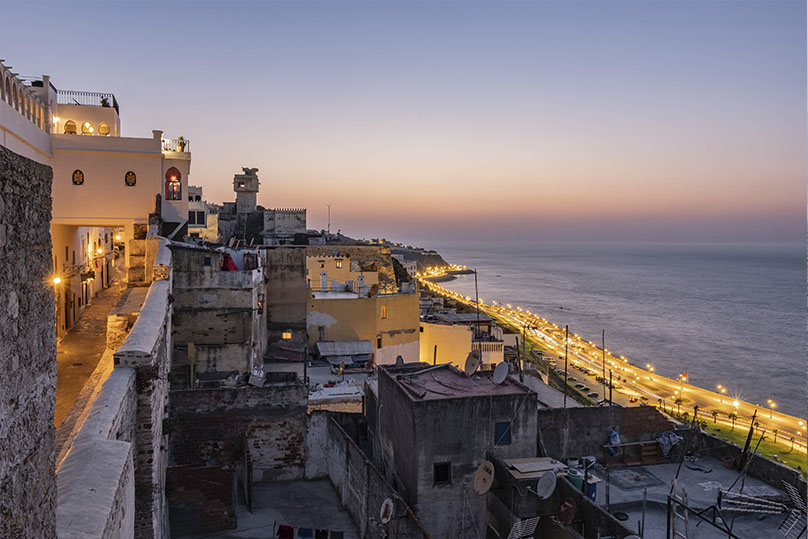
Photo by: Raul Cacho Oses
What to see in Tangier?
La Medina: It is the old part of the city, full of narrow streets with bazaars. Here you can visit:
- the “Great Souk” (Old Market), a busy square that forms the heart of the city from which you can move to any point of the city, and where you will find monuments such as: The Sidi Bu Abid Mosque (ceramic) , the Palacio del Mendub and La Mendoubia (gardens of exotic plants and trees) and the Bab Fahs (Market).
- In the “Small Souk” where you can find places to visit such as the old Catholic Church of La Purísima, the Dar Niaba (First residence of the ambassador of Sultan Mendub).
- If you are interested in art, you can visit: El Dar Shorfa, a museum of Moroccan arts where you can learn about its history and archeology; The Museum of the Lorin Foundation (arts of Tangier and Morocco); the Great Mosque; the Museum of the Kasbah (Moroccan art, antiquities and archeology); or the street of the synagogues “Cheikh el harrak” (Synagogue of Massaat Nahom).
The New Town.
- Boulevard Pasteur (main street), with shopping centers and shops.
- Gran Teatro Cervantes: It was the best known theater in northern Morocco in the 50s.
- Alcazabad Plaza where you can see the entire Port area.
- The Roman Punic Necropolis (4th century): with impressive views of the Strait of Gibraltar.
- At Cape Spartel we can see the separation between the Mediterranean Sea and the Atlantic Ocean. There we find the famous Caves of Hercules (12 km from Tangier), it is named after an opening to the sea in the shape of the map of Africa.
- The castle of Malabataen Cape Malabata (about 12 km from Tangier). Fortress from the 20th century with views of the sea.
Where to eat in Tangier?
- Le Salon Bleu (20 Rue de la Kasbah) €€. (Té en la maravillosa terraza con vistas al puerto y Kasbah de Tánger)
- Hammadi (Rue de la Kasbah, 2). €€ – €€€
- Le Nabab (Rue Zaouiah Kadira). €€ – €€€
- Morocco Club (Place du Tabor, Kasbah). €€€€
- Ahlen Medina (Rue des Postes, 8). €
- Cafe Comedia (25 Ave Mohammed V, Tangier) €€ – €€€
What to do in Tangier?
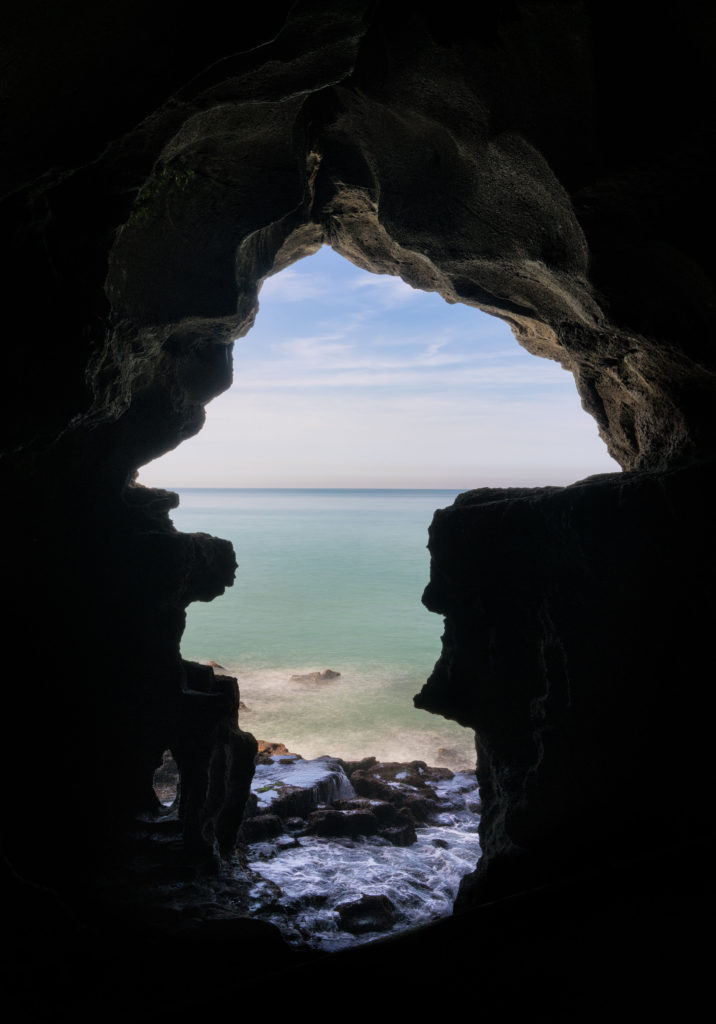
Photo by: Milad Alizadeh
- Attractions in the Marshan Quarter, including the Marshan Gardens, which run down to the sea. The Royal Palace, surrounded by palaces such as the Palace of the Mendoub, ambassador of the Sultan, later home of the American millionaire Forbes. Café Hafa, with views of the Strait of Gibraltar and a meeting place for intellectuals. The Phoenician Necropolis, remains of Phoenician tombs that preside over incredible views of the Strait and the Atlantic Ocean.
- Excursion to the Caves of Hercules: They are natural caves 15 km west of Tangier. Here we find the Akchour-El Kelaa Waterfall route that takes you through a path of pine trees and jungle areas until you reach the Kelaa River waterfall. They are caves with entrance from the sea and from the land formed by the erosion of the sea and the wind.
- One of the most popular sports in Tangier is Golf: Morocco’s first golf course was founded here in 1914.
- Rif Mountains: It is a chain of mountains in northern Morocco that runs parallel to the Mediterranean Sea through which you can do various hiking routes. Here we can find the fir forests of Talassemtane, the canyons of the Kelaa river and the Puente de Dios (spectacular geological monument).
- Coastal Route Tangier-Ceuta (Section Ksar Seguer Fnideq. 30 km): The route borders the Strait of Gibraltar. Pass through the Tanger Med port complex, Dalia coast, next to Punta Cires (the closest point from Africa to Europe).
- Camels on the beach: On the beach of Agadir.
2. ASILAH
About 40 km from Tangier is Asilah, a small fishing village located on the Atlantic coast. Whose walled center is characterized by its narrow streets and houses whitewashed and touches of blue, the decoration and paintings on its facades are unique.
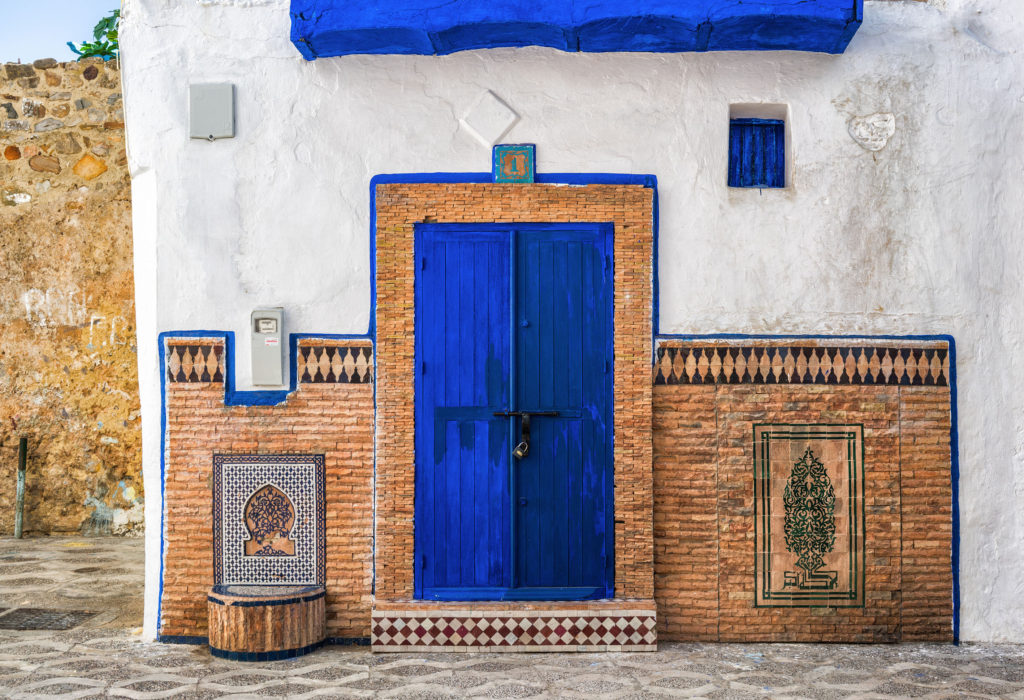
Photo by: Milad Alizadeh
What to see in Asilah?
Medinas (with Spanish influence and residential):
- Bab Al Kasba Gate that leads to the Medina.
- Walls built by the Portuguese in the 15th century.
- Great Mosque (the only religious temple in Asilah).
- Borj Al Kamra (great defensive tower of the medina).
Where to eat in Asilah?
- Alibaba (Av. Abou Firas Al Hamadani) €
- Dar Al Maghrebia (7 Rue Al Banafsaje) €€-€€€
- Farah (Av. Imame Assili, 18). €
- Perla del Atlántico (Playa de las Cuevas) €
- Tahadart (Route de Rabat-Akouass).€€
- Dar El Merrakchia (Av. Hassan II, 301). €
What to do in Asilah?
Dromedary walks (near the port of Asilah).
- Asilah Beach: Sunsets that dye the beach in orange and red colors.
- Aasilah International Cultural Festival: Held in summer, with an extensive program of cultural and artistic activities (mural painting, music, lectures and various performances).
- The Hamman: Therapeutic and relaxing Arab baths and massages (Hamman Al Alba, Lot. Nakhil, 35)
- Jblel Lahbib Mountain Excursion: The Dear Mountain. Here you can go hiking if you are interested, or just relax and enjoy the Moroccan nature.
- In Asilah you can also find varied workshops, Moroccan artisan bread, Arabic calligraphy, engravings, etc.
- The most practiced sports in Asilah are sea sports such as windsurfing (Sidi Mugaits Beach), kitesurfing and surfing. Although also land sports such as hiking or golf.
3. TETUAN
In this case, Tetouan is located near the Mediterranean Sea, near Tangier and Ceuta. Andalusian city with a long history linked to Spain, declared a World Heritage Site.

Photo by: Raul Cacho Oses
What to see in Tetouan?
Medina (UNESCO World Heritage Site).
- Gates of the Medina (7): Bab Tut, Bab Nouader, Bab Mqabar, Bab Ruwah, Bab Remuz, Bab Oqla, Bab Saida and Bab Sefli
- Museum of Moroccan Art.
- Markets of the Medina (Calle Trankat) ..
Spanish Expansion: Expansion made by the Spanish of the old town of Tetuán.
- Mulay Mehdi Plaza (Church of Our Lady of Victory and Consulate of Spain)
Houses of the Arab aristocrats.
Hassan II Square
- The old Khalifa Palace. Of Hispano-Moorish architecture (17th century)
- The Archaeological Museum
- Center of Modern Art
The Mellah (Jewish quarter).
Feddan Park: Plaza of Andalusian architecture with views of the white medina.
Where to eat in Tetouan?
- Riad el Reducto (Zankat Zawya, 38). €€ – €€€
- Restinga (Av. Mohammed V, 21). €
- La Esquina del Pescado (Av. Chakib Arsalan). €€ – €€€
- Restaurant Omar (Allal Ben Abdelah). €
What to do in Tetouan?
- Events of the Cervantes Institute or the French Institute: Concerts, exhibitions, conferences, …
- Hamman: Arab baths and massages.
- The beach: Tetouan is surrounded by long beaches of golden sand.
- Excursion to Boanan: It is the mountain area with great views of Tetouan.
- Snacks in Tetouan: Moroccan cakes and pastries accompanied by Moorish coffee or tea.
4. CHEFCHAOUEN
Founded by the Berbers and located in a mountainous environment in northern Morocco. It has now become an emblematic tourist destination. It is known as the “blue town” because of the blue color of the facades in its medina.
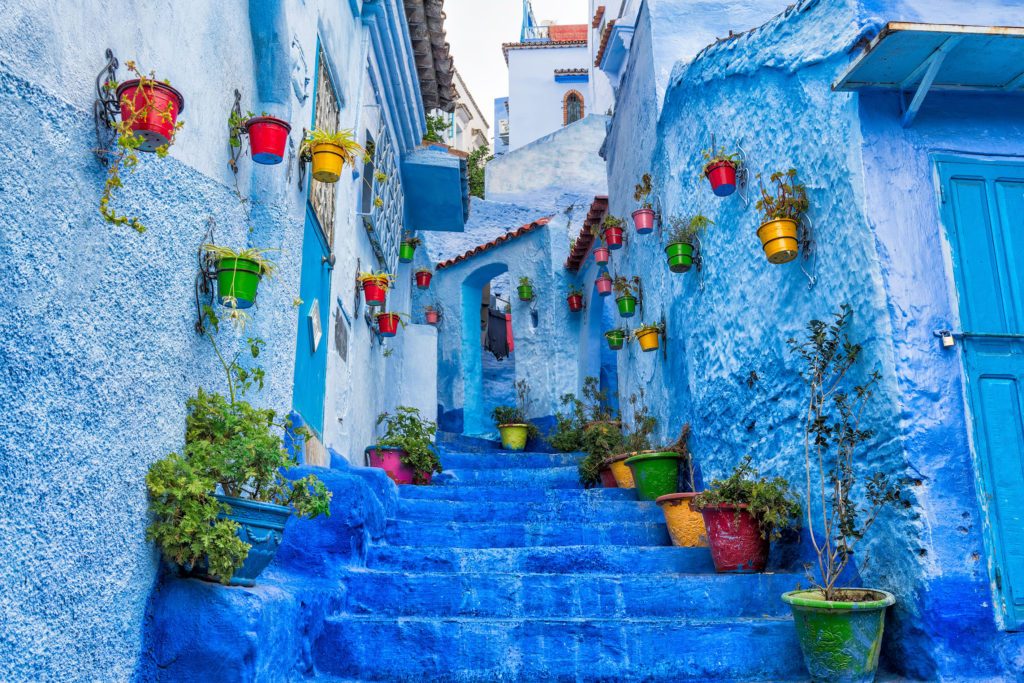
Photo by Milad Alizadeh
What to see in Chefchaouen?
- Waterfalls and washhouses of Chefchaouen. In the big river (Oued el Kebir) right at the Ras el Maa spring with transparent and cold waters shaped like waterfalls. At the highest point of the city you can enjoy a picturesque place with tables and chairs located in the middle of the same spring, where you can refresh your feet and have a natural juice. Next to it you can see how the locals wash their clothes in the laundry rooms.
- Medina: With its alleys with blue facades, stairways and patios.
- Uta el-Hamman Square: Here you can find the Kasbah (medieval fortress with beautiful gardens), the Great Mosque and the Ethnographic Museum of Chefchaouen.
- Bouzafar viewpoint. From which you can see the entire Medina and the mountains of Chefchaouen.
Where to eat in Chefchaouen?
- Café Rest. Sofía (Place Outa Hammam Khadarine Escalier Roumani).€
- Sindibad (Rue Ibn Askar). €€ – €€€
- Lala Mesouda (Av. Hassan Awal). €
- Rest. El Jaleo (Raas El Ma Fouara).
- Rest. Beldi Bad Ssour (Rue El Kharrazin, 5). €
What to do in Chefchaouen?
- Trek through the mountains that surround Chefchaouen (Rif Mountains).
- A swim in the Akchour waterfalls: In the Talassemtane park.
5. FEZ
City often compared to Jerusalem for its abundant walls steeped in history of Muslim culture. Cultural and religious center. It is one of the imperial cities of Morocco.

Photo by: Carlos Ibáñez
What to see in Fez?
Fez el-Bali: The oldest part of the city, a UNESCO World Heritage Site.
- Medina (8th century): Bab Boujeloud or Blue Gate. Entrance to the epicenter of the city, with three symmetrical arches decorated with blue tiles. Unique architecture that changes color due to the reflection of these tiles.
- Bu Yelud Gardens. Quiet green area close to the medina.
- Madrasa Bou Inania and Madrassa Al Attarine (Koranic Schools). Inside, walls carved by hand with complex and unique Arabic motifs.
- Palace of Fez (14th century): one of the largest and oldest in Morocco. The main entrance has 7 doors (sacred number) that preserve a laborious woodwork.
- Borj Nord: Fortress of the city. There is the Museum of Arms of Fez.
- Mosques Moulay Idriss II and Al Qarawiyyin (oldest university in the world and center of learning of Islam) both from the year 859.
- Nejjarine Museum and Dar Batha Museum (Moroccan Art and Crafts).
- The Fountains of Fez (Fountain of Nejjarine). Fez was one of the first cities to introduce the water supply with these colored fountains.
- Places to Visit: Saffarine Square, Bou Jeloud Square, R’cif Square.
Fez el-Jedid: Newer area.
- Mellah: Jewish Quarter. The structure of the houses gives a different air to this neighborhood, there are many shops and they are not very expensive due to its low influx of tourists.
- Dar el Makhzen Royal Palace (14th century).
- Ville Nouvelle: French colonial zone
Where to eat in Fez?
- Le Peroke Café (Derb Aguouale Sefli, 6). €
- Café Rest. Al Oud (Rue Talaa Kebira, 221). €
- Rest. Ouliya (Rcham Laayoun, 27). €
- Darori Resto (Derb Sayour, 2). €€
- Rest. Dar Tajine Fès (Derb Elghorba, 71). €€
What to do in Fez?
- Sports such as Golf and Horse Riding are a tradition.
- Excursion to the desert: Excursions to the Sahara desert can be made from Fez, the distance is less than from Marakech and it is cheaper. In the desert you can get to know the Berber culture.
6. MARRAKECH
Another of the Islamic imperial cities along with Fez, Rabat and Meknes. It’s one of the most important cultural centers in Morocco and one of the favorite destinations of tourists from all over the world. Famous for its markets and festivals.

Photo by : Yeo Khee
What to see in Marrakech?
- Jamaa el Fna Square: Central square of Marrakech famous for shows, street food stalls, musicians, etc.
- Koutoubía Mosque: The most important in Marrakech. Representative of Almohad art.
- Bahia Palace (late 19th century) and Badi Palace (late 16th century).
- Medersa Ben Youssef (Ben Youssef Madrasa).
- Saadian tombs.
- Marrakech Museum and Dar Si Said Museum.
- Menara Gardens and Majorelle Gardens.
- Palm grove.
Where to eat in Marrakech?
- Corner Café (Dabachi Kennaira, 18). €
- La Cantine Des Gazelles (Dabachi Kennaira, 6).€
- Amal (Rue Allal Ben Ahmed Et Rue Ibn Sina) €
- Naranj (Rue Riad Zitoun Jdid, 84). €€
- Dar Zellij (Kaa Sour, Sidi Ben Slimane, 1). €€€
What to do in Marrakech?
- Dromedary ride through the Palm Grove of MarrakechGolf: We recommend some in Marrakech.
- Relax in a Hamman: Visit a hamman and enjoy a relaxing bath.
- The Beach Clubs of Marrakech: They are large pools surrounded by Balinese and sun loungers. The most popular are:
- Hiking (Djebel Toubkal): at 4167 meters, the highest point in Africa and it takes about 3 days to go up and back to Marrakech.
- Get to know the Sahara desert: You can get to know the largest desert in the world by dromedary or in 4×4 cars. If you can, we recommend that you spend a night in a typical Berber haima and contemplate the wonderful starry night of the desert.
7. RABAT
Capital of the Kingdom of Morocco, located on the Atlantic coast and imperial city. Known as the City of Gardens.

Photo by: Hishem Zineddine
What to see in Rabat?
- Hassan Tower: Built by the Almohads in the 12th century.
- Mausoleum of Mohammed V: Modern Moroccan Art.
- The Great Mosque of Rabat: Built in the 14th century.
Medina: Between two Walls.
- The Andalusian Wall: Near the Jewish quarter (Mellah).
- The Walls of the Almohads (1197).
La Kasbah des Oudaias (The medieval Kasbah of the Udayas): Walled neighborhood of narrow alleys with houses painted blue.
- Garden of the Andalusíes (from the beginning of the 20th century. Arabic-Andalusian style).
- Museum of Decorative Arts of Rabat (Jewelry and textile garments).
National Archaeological Museum.
Chellah Necropolis: Moroccan fortress.
Where to eat in Rabat?
- Dar Zaki (Rue Moulay Brahim, 23). €€ – €€€
- Dar El Medina (Rue Benjelloul,3). €
- Tajine wa Tanjia (Rue De Baghdad, 9). €€
- Dar Naji (Rue Jazirat Al Arab/ Bab Al Had). €€
- Le Petite Beur (Rue Damas, 8). €€
What to do in Rabat?
- Boat trip on the Bou Regreg river.
- Surf
- Watch the sunset on Temara beach.
- Visit the neighboring town of Salé
Morocco … The dream destination of your swimming crossing in Straits of Gibraltar.

These are the 7 towns that we recommend you discover if you plan to travel to Morocco, chosen for their long and fascinating history that is reflected in each of its streets and impressive monuments. Medinas full of bazaars where you can buy handicrafts, coffee shops where you can taste a fabulous Moorish tea, hammans where you can relax with an exfoliating bath, adventures in the sea and mountains, … If you travel to Morocco and do not know where to go, consult this little guide that we have prepared for you.
USEFUL CONTACTS
- Local police: 190. For attention in cities
- Gendarmerie Royale: 177. (Civil Guard)
- Firefighters: 150
- Hospitals for care in Spanish (AMBULATORIES): Hospital Español de Tangier (Rue de l’Hopital Espagnol, Tangier. Tel .: +212 (0) 5 39 93 25 71/10 18), Hospital Español “Gómez Ulla” (Rue Khalid Ibn Oualid, Tetouan. Tel: +212 (0) 5 39 96 35 18/34 88)



